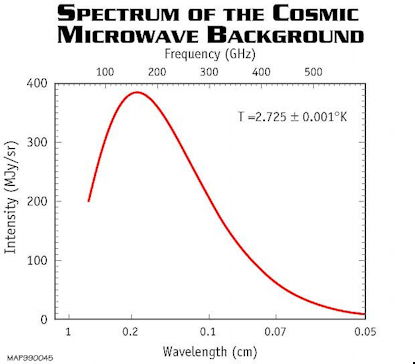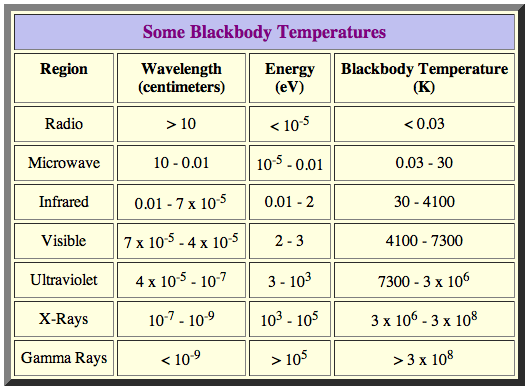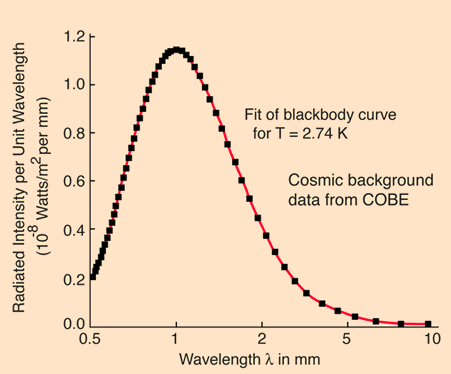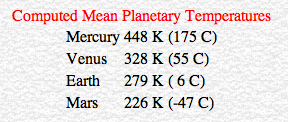P2: The Oort Soup as the real origin of Cosmic Microwave Background Radiation
[The Four Pillars of GAU, Part 2]
David Noel
<davidn@aoi.com.au>
Ben Franklin Centre for Theoretical Research
PO Box 27, Subiaco, WA 6008, Australia.
About CMBR
CMBR, Cosmic Microwave Background Radiation, was first observed inadvertently in 1965 by Arno Penzias and Robert Wilson at the Bell Telephone Laboratories in Murray Hill, New Jersey. The radiation was acting as a source of excess noise in a radio receiver they were building [2].
Penzias and Wilson were investigating the microwave radio emissions from the Milky Way and other natural sources. They had a very sensitive detector connected to a large horn-shaped antenna, previously used for satellite communication. When the two scientists tuned their equipment to the microwave portion of the spectrum, they discovered an annoying background static that wouldn't go away.
No matter where they pointed the antenna, or when, the microwave static was the same. They spent months running down every possible cause for the static, including pigeon droppings inside the antenna, but they couldn't find a source or a solution [12].
Eventually they realized that this radiation came from the sky, in fact from everywhere in space. It is primarily in the microwave portion of the electromagnetic spectrum, and is invisible to the naked eye. It fills the universe and can be detected everywhere we look. In fact, if we could see microwaves, the entire sky would glow with a brightness that was astonishingly uniform in every direction [2].

Figure TOS1. Spectrum of the Cosmic Microwave Background Radiation. From [2].
Living in a radiation bath
We are always conscious of the presence of some types of electromagnetic radiation, particularly light, and to some extent infrared radiation, which we feel as heat. We lack the senses to directly perceive such things as ultraviolet, microwave, or radio waves.
But everything in the Universe continually emits radiation, at a wavelength which depends on its temperature. Hot objects emit at short wavelengths, cold ones at longer (lower energy) wavelengths. At the same time, everything is receiving radiation from near and far objects.
Much of the matter in the Universe is in thermal equilibrium -- energy in equals energy out. This is the case for the Earth itself [13].
The primary law governing radiation is the Planck Radiation Law, which relates the intensity of radiation emitted (by unit surface area into a fixed direction from a body) as a function of wavelength for a fixed temperature [5].
Derived from the Planck Law, the Wien Law gives the wavelength of the peak of the radiation distribution. The laws assume that emitting and receiving objects are what are called "Black Bodies" -- they are perfect emitters and receivers.

Figure TOS2. The Wien Law relating temperature and peak radiation wavelength. From [5].
From the Wien Law formula, if a body is at 3 K (3 degrees above absolute zero), it emits at 107 Angstroms, or exactly 1 millimetre.
The following table summarizes the blackbody temperatures necessary to give a peak for emitted radiation in various regions of the electromagnetic spectrum.

Figure TOS3. Temperature and peak radiation wavelength. From [5].
In the table, the right-hand column shows the blackbody temperature in K, the number of degrees above absolute zero (about minus 273 degrees C). So microwaves are emitted by objects just above absolute zero, from 0 K up to 30 K.
For visible light to be emitted, an object such as a star must be above 4100 K (about 3800 deg C).
Following the original discovery of CMBR, several satellites were placed in space specifically to detect and measure the radiation. These included COBE, the Cosmic Background Explorer [14], and others. The shape of the CMBR spectrum was defined with good accuracy.

Figure TOS4. Microwave data from the COBE satellite. From [1].
All the data showed that the radiation peak was consistent with thermal radiation from very cold matter, at about 2.7 K, less than 3 degrees above absolute zero.
The CMBR band was the strongest, but not the only, band of radiation detectable at microwave frequencies. Several bands, collectively called Diffuse Extragalactic Background Radiation, have been found.

Figure TOS5. Extragalactic microwave bands. From [3].
These other bands were at shorter wavelengths than CMBR, and so had the higher energies characteristic of emission from matter considerably warmer than the CMBR source, though still not that far above absolute zero.
With the discovery of CMBR and its identification as emitted from matter at around 2.7 K, it might be thought that astronomers would strive to identify all possible sources for its origin. In the event, due to what might now be regarded as an unfortunate coincidence, this research was never done.
Hijacked by a Big-Banger
While Penzias and Wilson were carrying out the 1965 research at Bell Telephone Laboratories in New Jersey, a physicist at nearby Princeton University, Robert H. Dicke, was doing theoretical work on the Big Bang model of the Universe proposed by George Gamow, Ralph Alpher, and Robert Herman rather earlier, in 1948 [12].
Robert Dicke came to the conclusion that if the Big Bang had occurred, it would have left behind residual radiation from the Big Bang which would still be present in the universe. He calculated that the lingering radiation should have a "temperature of about 10 K", shorthand for radiation from matter at about this temperature.
However Dicke did not believe that the radiation came from a cold source, instead he thought that it came from much more energetic radiation, produced during the Big Bang, which had been greatly stretched out and weakened by the expansion of the Universe postulated in the Big Bang theory.
Dicke did not know that similar calculations had been done after 1948 by two of the original Big Bang team, Ralph Alpher and Robert Herman. In their model, too, the early Universe would have been extremely hot, and mostly consisting of very-high energy light. This light would have lost most of its energy as the Universe expanded.
Alpher and Herman went on to calculate the present "temperature" corresponding to this energy. The answer they got was 5 K, that is, 5 degrees above absolute zero on the Kelvin scale [12]. Radiant energy at a "temperature" of 5 K falls in the microwave frequency band.
And so to the unfortunate coincidence. Dicke was working at Princeton University, quite close to where Penzias and Wilson were working on their cosmic microwave discovery. He found out about their work, before it was published, and immediately jumped to the conclusion that their microwaves were his microwaves, stemming from the Big Bang.
The result was a pair of papers in the Astrophysical Journal (vol. 142 of 1965): one by Penzias and Wilson detailing the observations, and one by Dicke, Peebles, Roll, and Wilkinson giving the cosmological interpretation. Penzias and Wilson shared the 1978 Nobel prize in physics for their discovery [2].
So as a result of this coincidence, the physical source of CMBR never had the kind of scrutiny applied to other new data. Their interpretation was presented as a fait-accompli, no need to look further.
In modern times, however, many defects have been found in the ideas that galactic red-shifts imply that the Universe is expanding, that this started with a Big Bang, and that CMBR originated from this explosion [10, 15]. Let us go on now to look at a much more realistic source for CMBR.
The Oort Soup -- most of the Universe
It is natural enough that astronomers, right from the Babylonians of earlier millennia, have looked first to the stars as their main source of knowledge of the wider universe. Visible light was their domain, other electromagnetic frequencies were unknown to them.
In more modern times, astronomers have gained access to other parts of the electromagnetic spectrum, first radio, then ultraviolet and infrared. But still the main emphasis has been on objects which can be seen, either by their own light or by light reflected from objects quite close to them.
Our knowledge of objects falling outside these bounds is still very limited. Beyond the Solar System, or the solar systems of other stars, much is only speculative.
Earlier in 2014, I began a new analysis of how solar systems are formed, published as The Cosmic Smog model for solar system formation [11].
Current theories in this area mostly work from the inside out: they assume a star is formed by the aggregation of interstellar gas and dust, and around this star a "protoplanetary disc" of loose matter is formed, from which planets condense. Larger objects still in the system, but well beyond any planets, are assumed to have got there by being thrown out from the inner planetary area.
In "Cosmic Smog", the opposite approach was taken. Interstellar space was assumed to consist throughout of a "soup" of objects, not only gas and dust, but also planetesimals, asteroids, planets, and objects of the mass of Jupiter and higher.
In this model, a star is formed when an aggregation of matter from this soup reached a mass great enough for stellar ignition to occur, with its hydrogen being converted to helium and heavier atoms, as in our Sun.
The model turned out to give better explanations of known facts about our own Solar System, for example why some meteorites appear to be of greater age than the Sun. The model also explained why the planets lie roughly in the ecliptic or the equatorial plane of the Sun's rotation, while dwarf planets beyond Neptune have increasing inclinations to this plane, and very distant comets orbit at random angles.
But the model also turned out to have some quite unexpected and far-reaching consequences, and answers to some previously unexplained matters.
The model implied a quite different picture of planetary system formation. Instead of a sun being formed first, and planets and other orbiting objects produced after the new sun, the incipient star was formed once a body of sufficient mass had aggregated from within the general interstellar soup.
The new star then began to work gravitationally on other objects nearby in the soup, converting their initially random orbits to lie closer to the plane of rotation of the new star, or causing them to merge or fall into the new sun. This occurred slowly, during many millions of years, and the orbit rationalization was greater, the closer to the new sun.
To give some idea of scale, in our Solar System the outermost planet is Neptune, which orbits at about 30 AU from the Sun (1 AU is the distance of Earth from the Sun). Beyond Neptune, at about 30-50 AU, there are some dwarf planets with highly-inclined orbits. Beyond about 100 AU, which can be taken as the limit of the Sun's gravitational influence, lies the Oort Cloud.

Figure TOS6. The Kuiper Belt and the Oort Cloud in the outer Solar System. From [16].
The Oort Cloud is still a largely unknown domain. Those few objects which have been detected from it, such as long-period comets which only visit the Sun once, have highly elliptical orbits random to the ecliptic.
So the general picture in the Cosmic Smog model is of a galaxy-wide Oort Soup, containing gas, dust, planetesimals, planets, and black dwarf stars of sub-solar mass, in which there are occasional volumes where a mass aggregation great enough to form a working star has occurred.
This star then "hollows out" its surrounding volume of the Soup, slowly rationalizing the orbits of planets and other objects within its gravitational reach to lie closer to its own equatorial plane.
Further details can be found at the reference. Among the matters which the model explains, perhaps for the first time, are a period in solar-system history known as the "Late Heavy Bombardment", with an explanation of its age, the inclinations of the orbits of solar-system objects, and the formation of the Rings of Saturn.
A major unexpected outcome of the model concerns Dark Matter. Dark Matter is a previously unidentified form of matter required to explain the gravitational behaviour of clusters of galaxies. Many theoretical sources have been suggested, but none ever identified experimentally till now.
It is now apparent that the Oort Soup is a very satisfactory explanation for Dark Matter. We have seen above that our own Solar System appears to have evolved from Oort Soup within a sphere of radius 100 AU. So a sphere of radius 100,000 AU, which would reach almost half-way to the nearest star, would contain one billion times the volume of the Solar System.
If the Oort Soup existing in this sphere had an average density only one-tenth that of our Solar System, it would have a mass 100 million times that of our Sun and planets. This is more than ample enough to explain Dark Matter phenomena.
The real origin of CMBR
The origin of the Cosmic Microwave Background Radiation thus becomes virtually self-evident. Most of the matter in the galaxy consists of cold bodies very distant from stars and other sources of light. CMBR is produced by normal thermal radiation from matter as cold as 2.7 K. The source of CMBR is the Oort Soup making up most of the Universe.

Proposition TOSP1
Having established the origin of CMBR, we can go on to make further deductions about the make-up and disposition of the Oort Soup. Look again at Figure TOS1.

Figure TOS1. Spectrum for the Cosmic Microwave Background Radiation. From [2].
The spectrum tells us that there is a lot of cold matter in the Universe, cold because it is very distant from sources of heat, light, or other energy. Presumably this matter is in thermal equilibrium -- whatever energy it receives, from all sources, is re-radiated as normal thermal radiation.
The peak of this radiation corresponds to matter at a temperature of about 2.7 K. Why should there be a peak at this point? It almost certainly reflects the distribution of matter in the volumes between the stars.
Assume that the Oort Soup has an approximate large-scale uniformity. The CMBR peak then represents matter most distant from warmer sources of radiated energy such as stars.
Consider the temperatures of bodies around a star. In the long run, all will have equilibrium temperatures which depend on their distance from the star. The further you go out, the lower will be the temperature of the Oort Soup components.
The amount of component at a given distance will increase as the cube of the average distance, as does the volume of space involved. In the figure, as you go further from the star, you are climbing up the slope on the right-hand side, receiving radiation from colder and colder component.
Why then does the curve show a peak, why does the amount of component at around 2.7 K start to fall off? This happens because some of the component is starting to receive energy from other source stars, and so finds equilibrium at above 2.7 K. So the CMBR peak directly reflects the median distance of Oort Soup matter from the stars or other energy sources.
Calculations of distances
Calculating the equilibrium temperature of a body at a given distance from a star is a routine matter. It is interesting to note that this temperature depends only upon the distance of the planet from the Sun, and not upon the size of the planet.
For those interested, here is the formula needed.

Figure TOS7. Calculating temperature of a body distant from a star. From [8].
To get the temperature, T (in degrees Kelvin) you just need to slot in the energy being radiated by the star, and the values for pi, the Stefan-Boltzmann Constant [7], and the distance of the planet or other body from the star.
Here are results for some of the planets. The table below lists the mean planetary temperatures expected for the four terrestrial planets if they had no atmosphere, were ideal radiators and were rotating with a period measured in no more than a few tens of hours.

Figure TOS8. Computed mean planetary temperatures. From [8].
The actual surface temperatures of planets are higher than the ones calculated using the formula above. Apart from the factors already mentioned, the planet may be generating its own heat internally, as is the case for Earth.
In fact it seems probable that most Oort-Soup objects with mass above that of Mars either were or are still generating internal heat. The probable reason for this is given in [17].
The formula applies at any distance from the star, and so can be used to calculate the distance implied by a 2.7 K emission temperature.
According to [9], members of the Oort Cloud are at a typical temperature of about four degrees Celsius above absolute zero (4 K). Most lie beyond our Solar System's plane of planetary orbits, between 10,000 and 20,000 AU outward from the Sun.
Without having calculated the 2.7 K distance above, it is quite possible that the Oort Soup extends into inter-galactic space, beyond individual galaxies, in which case the distance may be of the order of hundreds of light years.
A new technique for Oort-Soup astronomers
Detecting dwarf planets and other objects lying out towards the Oort Cloud or within it is currently difficult for astronomers. They do not shine with their own light, and, with their small size and extreme distance from the Sun, produce little reflected light.
Those which have been detected have mostly been objects with highly elliptical orbits which bring them closer to the Sun at some parts of their orbit. This is the case with long-period comets, which originate within the Oort Cloud. As they approach the Sun, their ice and dust components may break off to form a highly visible tail.
The reasoning here suggests another technique for detecting distant Oort-Soup objects. If you look again at the TOS1 spectrum curve, it tails off smoothly to the right. This is the area of warmer objects, closer to stars.
The CMBR spectrum is well-known to be highly homogenous, very much the same for any direction in the sky. But with apparatus sensitive to higher-energy microwaves, and directed to specific tiny areas of the sky, it may be possible to detect areas of graininess in the curve which stem from Oort-Soup objects which produce their own internal heat.
Listen to Ockham
My view is that it is always better to Listen to Ockham, to apply Ockham's Razor to an intellectual framework you have before you. William of Ockham's tenet was to say, in brief, if you have to decide between a number of explanations of a matter, you should always choose the simplest.
In the current case, the Oort Soup approach replaces the cumbersome and shaky Big Bang Theory, not with another theory, but with standard physics -- No Theory Needed.
* * * * * * * * * * * * * * * * * * * * * * * *

References and Links
1. Radiation Curves. http://hyperphysics.phy-astr.gsu.edu/hbase/bbrc.html#c2 .
2. Discovery of the Cosmic Microwave background. http://map.gsfc.nasa.gov/universe/bb_tests_cmb.html .
3. Diffuse extragalactic background radiation. http://en.wikipedia.org/wiki/Diffuse_extragalactic_background_radiation .
4. WMAP Cosmic Microwave Background Year Five -- Frequency and Polarization. http://sos.noaa.gov/Datasets/dataset.php?id=275 .
5. Radiation Laws. http://csep10.phys.utk.edu/astr162/lect/light/radiation.html .
6. Thermal radiation. http://en.wikipedia.org/wiki/Thermal_radiation .
7. Stefan-Boltzmann law. http://en.wikipedia.org/wiki/Stefan-Boltzmann_law .
8. Planetary temperatures. http://www.spaceacademy.net.au/library/notes/plantemp.htm .
9. Oort Cloud & Sol b? http://www.solstation.com/stars/oort.htm .
10. David Noel. The Placid Universe Model, or, Why the Universe is NOT Expanding, or, The real origin of CMBR, Cosmic Microwave Background Radiation. http://www.aoi.com.au/bcw/Placid/index.htm .
11. David Noel. The Cosmic Smog model for solar system formation,
and the nature of 'Dark Matter'. http://www.aoi.com.au/bcw1/Cosmic/index.htm .
12. The Cosmic Microwave Background Radiation. http://www.amnh.org/education/resources/rfl/web/essaybooks/cosmic/cs_radiation.html .
13. David Noel. Temperatures of the Earth -- a Globe in Space (a re-analysis with some surprising results). http://www.aoi.com.au/bcw/EarthTemp/index.htm .
14. Cosmic Background Explorer. http://en.wikipedia.org/wiki/Cosmic_Background_Explorer .
15. David Noel. R.I.P. Expanding Universe (b. 1930, d. 2012): (The Big Bang never happened). http://www.aoi.com.au/bcw/RIPExpanding/index.htm .
16. Outer Solar System. http://deepspaceexplorers.org/ .
17. David Noel. Inside The Earth -- The Heartfire Model. http://www.aoi.com.au/bcw/Heartfire/index.htm .
Stablemate articles:
P0: -- The Overview article for the four COSMOLOGY PLUS articles:
P0: The Four Pillars of GAU: The Solar System and the Greater Averaged Universe.
P1: -- About the nature of matter between the stars:
The Cosmic Smog model for solar system formation, and the nature of 'Dark Matter'.
P2: -- About the origin of CMBR, Cosmic Microwave Background Radiation:
The Oort Soup as the real origin of Cosmic Microwave Background Radiation .
P3: -- How the microwave radiation from the Oort Soup opens up a new branch of Mid-IR astronomy:
Living In The Universe: (What CMBR tells us about Dark Matter, and much more).
P4: -- More about the Oort Soup, and how the Solar System fed from this in its billion-year history:
The Greater Averaged Universe (GAU) -- How the Solar System cannibalizes the Oort Cloud.
About the newer model of the Universe, superseding the Big Bang: The Placid Universe Model -- Why the Universe is NOT Expanding, or, The real origin of CMBR, Cosmic Microwave Background Radiation.
About proving the Big Bang Theory is wrong: R.I.P. Expanding Universe (b. 1930, d. 2012): (The Big Bang never happened).
About heat being generated within planets and small star-like objects: Inside The Earth -- The Heartfire Model.
Go to the AOI Home Page
Draft Version 1.0, 2014 Dec 2-8.
First version 1.1 on Web, 2014 Dec 9.
V. 2.0 for COSMOLOGY PLUS part 2, 2016 Feb 24.












